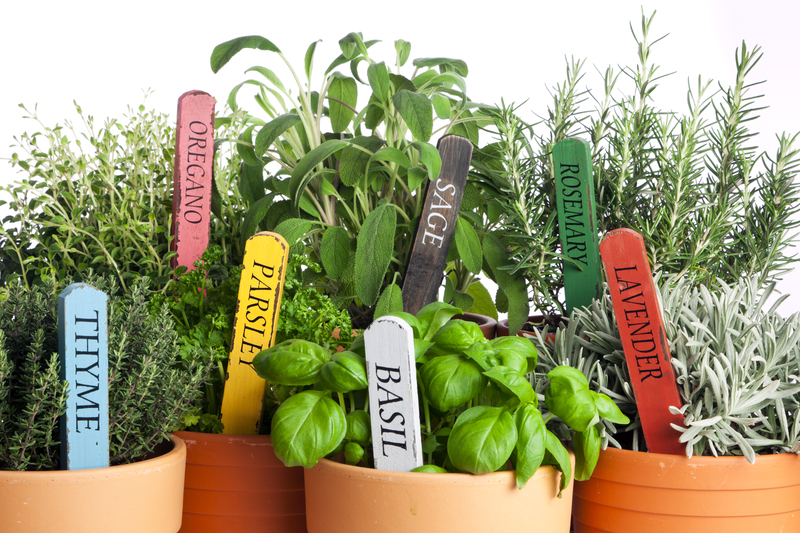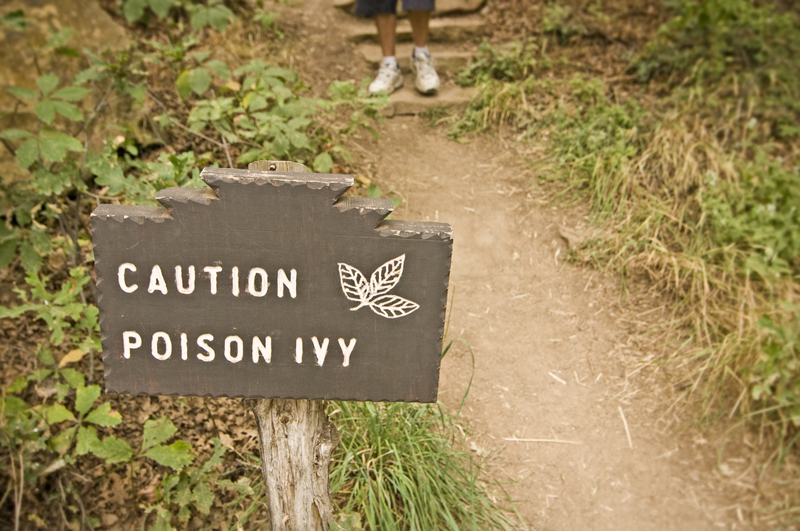Crafting Safe Adventures: Building a Garden for Little Ones
Posted on 12/06/2025
Crafting Safe Adventures: Building a Garden for Little Ones
Are you looking for ways to spark curiosity and create an enriching outdoor experience for your children? Building a garden for little ones is a fantastic opportunity for safe adventures, learning, and joyful play right in your backyard. This comprehensive guide will walk you through the essentials of designing, planting, and maintaining a child-friendly garden--one that's both thrilling and remarkably safe for your youngest explorers.

Key Benefits of a Child-Safe Garden
Before delving into the details of crafting a secure garden for little ones, it's important to recognize why gardening is such a deeply beneficial experience for children. A thoughtfully designed garden offers:
- Physical activity and motor skills development
- Cognitive growth through problem-solving and observation
- Connection with nature and environmental stewardship
- Safe opportunities for imaginative play
- Social interaction through shared outdoor tasks
When you focus on creating a garden safe for kids, you lay the foundation for magical childhood memories--and nurture lifelong skills.
Planning Your Child-Friendly Garden
Location, Layout, and Boundaries
Begin by selecting the best location in your yard. Look for a spot that receives adequate sunlight, drains well, and offers visibility from your home. Consider these points when designing your safe garden for young children:
- Visibility: Ensure you can always see your little ones while they're outside. If necessary, remove large obstructions.
- Fencing and Gates: Install child-proof fencing and self-latching gates to clearly mark the boundaries. This keeps children safely inside the garden and helps keep potential dangers out.
- Paths and Zones: Design clear paths with soft, non-slip surfaces. Create dedicated zones (e.g., a play area, vegetable beds, resting spots) to make the space organized and welcoming.
Choosing Safe Plants and Features
When building a garden designed for little ones, prioritize non-toxic, soft-leaved, and resilient plants. Avoid anything that's potentially poisonous, prickly, or allergenic. Safe, sensory-rich plant choices include:
- Sunflowers (Helianthus annuus)
- Marigolds (Tagetes)
- Snapdragons (Antirrhinum)
- Strawberries (Fragaria)
- Herbs like basil, mint, and chives
- Lamb's ear (Stachys byzantina) for its velvety leaves
- Blueberries and raspberries (in raised beds to contain them)
Avoid: Foxglove, oleander, monkshood, castor bean, lilies, daffodils, and anything you're unsure about--many common ornamental plants can be toxic if ingested.
Edible Gardens: Fun and Nutritious
Introduce your children to growing their own food with easy-to-handle crops:
- Cherry tomatoes (ensure children know to only eat ripe, red fruit)
- Peas and beans (fun for little hands to pick and shell)
- Radishes--fast-growing and vibrant in color
- Carrots and beets (offer a "surprise" beneath the soil)
- Leafy greens like lettuce and spinach
Incorporate these choices into your adventure garden for children to boost their nutrition and enthusiasm about eating healthy foods.
Essential Safety Measures in a Children's Garden
Soil Safety and Preparation
Before planting, test your soil for contaminants (such as lead, especially in older neighborhoods). Use raised beds or containers with fresh, organic soil mixes when in doubt to ensure a safe start. Regularly clear away debris, sharp twigs, or litter.
Safe Hardscaping Choices
- Paths: Mulch, wood chips, or rubber matting offer gentle, cushioned surfaces for little knees and reduce the chance of slips or splinters.
- Patios: Choose non-slip pavers or textured stone. Avoid anything that becomes dangerously hot or slippery when wet.
- Shade Structures: Offer shelter from strong sun with canopies, umbrellas, or trellises covered in fast-growing vines like sweet peas or morning glories (confirm these varieties are non-toxic).
Water Features: Caution and Inspiration
If you wish to include water (like a small pond or fountain), use extreme caution. Ponds should be no deeper than a few inches and always covered by a sturdy mesh. Alternatively, opt for a birdbath or a sealed, self-contained water table for safe splash play.
Remove Hazards; Add Adventure
- Routinely inspect and remove sharp tools, hoses, chemicals, or fertilizers from children's reach.
- Replace hazardous garden ornaments with child-friendly items like painted stones, fairy houses, or crawling tunnels.
- Monitor for stinging insects and teach children to identify them.
- Install handrails or low fences near steps or raised beds.
Safe Tool Selection for Little Gardeners
Offer child-sized, blunt-edged tools made from sturdy plastic or wood. Supervise kids while they use trowels, spades, and watering cans. Encourage them to wear gloves, hats, and closed-toe shoes at all times.
Enriching Activities: Encouraging Discovery and Play
Interactive Elements for Creative Play
Transform your kids' gardening adventure with interactive features:
- Weaving willow tunnels or bean teepees for secret hideaways
- Sandboxes, mud kitchens, or digging patches for tactile fun
- Stepping stones and treasure trails using shells or glass beads
- Balance logs and natural climbing features
Themed Gardens for Learning
Spark curiosity by choosing a theme. Popular options include:
- Sensory gardens (plants with diverse scents, textures, and colors)
- Butterfly and pollinator patches
- Pizza gardens (tomatoes, peppers, oregano, basil)
- Fairy gardens (miniature houses, pebbled paths, and mossy corners)
Wildlife Observing and Learning Opportunities
Teach children about nature's cycles by providing homes for beneficial insects and birds:
- Install a bee hotel or ladybird house
- Set up bird feeders and nesting boxes
- Grow a mini wildflower meadow to attract butterflies
DIY Projects for Little Helpers
Involve your child in:
- Painting plant markers or pots
- Building raised beds with simple kits
- Assembling a homemade scarecrow
- Tracking plant growth with daily drawings or a photo diary
Seasonal Care and Involving the Whole Family
Gardening is a year-round activity. Engage your child during each season:
- Spring: Plan, sow seeds, and watch new growth
- Summer: Harvest and enjoy water play
- Autumn: Collect seeds, rake leaves, and prepare for winter
- Winter: Decorate trees with edible treats for wildlife or try indoor gardening with starter kits
Involve siblings, parents, and grandparents--gardening is a wonderful way to bond while cultivating responsibility and teamwork.
Maintenance: Keeping Your Garden Playful and Safe
Routine Safety Checks
- Walk the garden weekly to look for hazards--broken branches, worn-out structures, or animal droppings.
- Clean up spills, puddles, or anything that could become slippery.
- Refresh mulch or soft surfaces periodically.
Nurturing the Garden (And Young Gardeners)
- Encourage daily watering, gentle weeding, and observing changes.
- Celebrate successes--snap photos, host a mini "harvest festival," or invite friends for a garden playdate.
- Use setbacks (like pests or failed plants) as chances to learn together.

Frequently Asked Questions About Kids' Gardens
What are the safest plants for children?
Choose edible, non-toxic plants such as marigolds, sunflowers, nasturtiums, herbs, and berries. Always check with reputable resources if unsure.
How can I child-proof an existing garden?
- Remove any potentially poisonous or spiny plants
- Block off access to tools, chemicals, and fragile statues
- Add mulch and soft ground covering
- Introduce playful, safe features and age-appropriate equipment
Is it safe to use home compost in a children's garden?
Home compost is generally safe once fully decomposed. Avoid using compost with pet waste or moldy food scraps, and always wash hands after handling compost or soil.
How do I encourage reluctant children to garden?
- Let them pick some of the plants or seeds
- Make it a fun family activity
- Incorporate easy-win projects like fast-growing radishes or sunflowers
- Celebrate small milestones and discoveries
Conclusion: Creating Lasting Memories Through Safe Adventures
Building a garden for little ones isn't just about plants and plots--it's about crafting an inviting, secure space where curiosity blossoms and imagination thrives. With careful design, age-appropriate features, and a dose of creativity, your garden can become a living classroom and a playground full of wonders--all while ensuring the safety and happiness of your children.
So roll up your sleeves, include your young explorers at every step, and watch as your family grows together in this joyful, nurturing oasis. The adventure of gardening with kids is as rich as the soil beneath your feet--dig in and nurture lasting memories!

